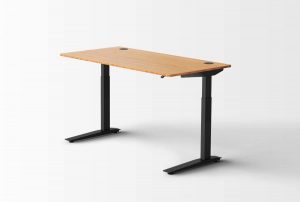As far as employees are concerned, it’s remote work or bust. But could safer offices tempt workers back to their desks?

Image: iStock/CentralItalliance
Bringing employees back into the office is going to require careful planning for businesses, who must not only ensure that workplaces meet the safety requirements of the post-pandemic landscape, but also serve the needs of employees who have become accustomed to working remotely.
Making employees actually want to return to their desks looks set to be a particularly sticky challenge: according to a recent survey from jobs platform LiveCareer, nearly one third (29%) of employees would quit their job if they were told they were no longer allowed to work remotely.
SEE: TechRepublic Premium editorial calendar: IT policies, checklists, toolkits, and research for download (TechRepublic Premium)
The survey, which quizzed over 1,000 professionals in the US about their experience with remote working, also found that workers were likely to prioritize job opportunities that allowed more flexibility, with 62% saying they would give preference to employers who offered remote work.
LiveCareer’s survey isn’t a one-off: in fact, its findings on workers’ attitudes to returning to a physical workplace bears striking resemblance to a survey of more than 2,200 professionals by anonymous network Blind. It also found that 29% of workers would rather throw in the towel with their current employers than return to the office in a full-time capacity.
Blind co-founder, Kyum Kim, told TechRepublic that the professionals who were willing to quit their jobs if forced to return to the office were the same professionals who had made permanent changes during the COVID-19 pandemic.
“People moved further away from their office to live more comfortably,” Kim said.
“They expect their employers to be flexible to their present-day life, or will transition to a company that is.”
No straightforward answer
It’s been difficult to get a good read on what the prevailing attitude is towards working from home since traditional workplaces shut in the early months of 2020. While the consensus largely appears to be that employees relish the flexibility and (subjective) comfort that working from home provides, this is at odds with the mental health spectre that has loomed over the COVID-19 crisis, with countless reports and statistics highlighting the toll that working in insolation has on wellbeing.
This is captured in LiveCareer’s survey. Despite 81% of employees saying they enjoyed working remotely, and 61% expressing a desire to continue working in a remote capacity after the pandemic is over, only 45% of those polled said that telecommuting had not taken a toll on their mental wellbeing.
Clearly, the ideal situation is about balance: employees want the option to work remotely, while also having a shared workspace that they can use when needed.
SEE: Wellness at work: How to support your team’s mental health (free PDF) (TechRepublic)
One major factor employers need to address to make the return to office life more appealing is safety. With many companies still trying to figure out how they can reconfigure or otherwise re-think their real estate investments to suit a new hybrid workforce, ensuring workplaces are safe should top the agenda.
“As employers encourage their employees to return to the office, data tells us that transparent communication around the measures being taken to support employee safety is critical,” says Greg Turner, senior director of technical services, at Honeywell Building Technologies.
Research recently published by Honeywell demonstrates just how highly safety scores amongst employees deliberating their return to work. According to a survey of 2,000 workers in the UK, US, Germany and the Middle East between November and December 2020, nearly one in four (23%) remote workers would look for a new job rather than return to a workplace that they felt was unsafe, with 68% reporting that they did not feel completely safe working in their employer’s buildings. This figure rose to 75% among remote workers.
Honeywell’s report revealed a litany of health concerns amongst employers, which have been exacerbated by the events of the past 12 months. Fifty-nine per cent of respondents said they were worried about co-workers not following COVID-19 health and safety rules, while 56% were concerned about the possibility of airborne transmission while working in the confines of an office.
Turner told TechRepublic it was an issue that businesses should take seriously. “A large number of tech companies are enabling their employees to work fully remote, and these will quickly become ’employment destinations’ if other companies try to force workers back too soon, or without the right precautions in place,” he said.
“The gist of it is: companies that do not take it seriously could risk losing their talent to those that do.”
Pressure to return
Despite ongoing calls from healthcare experts and governmental authorities to work from home where possible, data suggests that some workers are under pressure to return to potentially unsafe workplaces.
OneLogin’s recent State of Remote Work Survey found that 34% of its 2,000 respondents had faced some degree of pressure to return to the office. This was highest amongst IT professionals, with half saying that had been pressured to go back to work.
Commenting on the findings, Brad Brooks, OneLogin CEO and President, suggested that some business leaders had shown an unwillingness to adapt to the circumstances of the COVID-19 crisis.
“These results indicate that not all companies and industries have adjusted to the pandemic in the same way, or with as much flexibility or understanding,” said Brooks.
“That individuals have felt pressured to return to the office during the greatest public health crisis of the century speaks to how complex the task of setting up a remote workforce has proven, and also indicates that the rapid speed of the changes ushered in by the pandemic have not been welcomed by all businesses.”
Regardless of current attitudes to remote working, it is most certainly a trend that will prevail beyond the pandemic. But the reopening of traditional workplaces is also inevitable – perhaps just not on the same scale as was the pre-2020 norm.
Before that happens, action is needed. According to Honeywell, while many facilities have made changes to procedures to make them safer, they’ve yet to make changes to the physical spaces themselves. Employees say this isn’t enough: 54% of those who responded to Honeywell’s survey felt that building management had not taken the appropriate steps to make their workplace secure.
Addressing employee’s concerns
According to Turner, employers who plan a re-opening of offices in future need to take visible steps to address employees’ concerns, particularly in cases where employers are investing in new building technology.
“People want to go back to in-person interactions and collaboration, that’s for sure. But they have also found the benefits of working remotely and many are nervous to return to working in close quarters,” he said.
“Employees will want to know they are safer and buildings will need to provide the data to provide reassurance.”
These building technologies can roughly be split into two categories: those that are being introduced to tackle COVID-19 directly – such as health screening and temperature checks – and those that improve overall ‘building health’ beyond the pandemic.
This includes electronic air cleaners and indoor air-quality sensors that provide real-time updates to building managers, as well as UV light sanitizing and touchless entry points.
SEE: Software as a Service (SaaS): A cheat sheet (free PDF) (TechRepublic)
Other technologies – for example, analytics that monitors whether occupants are maintaining social distancing and occupancy sensors in rooms – could also last longer, according to Turner.
“Employees will want to know they are safer and buildings will need to provide the data to provide reassurance,” he said.
“Honeywell developed a Healthy Building Dashboard that gives occupants and managers a real-time look at what’s happening in their building in terms of air quality and occupancy. Workers can use building data to make informed decisions to keep their buildings safe on any given day.
“I think we’ll likely see more buildings deploying similar dashboards to give occupants visibility into their building’s health.”
Time will tell
If 2020 taught us anything, it was that trying to predict when things might return to some form of normality is pointless. Many assumed that remote working would be short-lived, and that we’d all be back at our desks alongside our colleagues before the end of the year. In hindsight, the idea seems ludicrous.
Looking ahead to 2021, we’re back to playing the guessing game. There’s clearly a desire to return to the office in some capacity, yet workers also relish the feeling of empowerment that their new, digital nomad lifestyle brings.
Businesses may find that the longer it takes them to make offices safe, rewarding and valuable places to work, the harder it will be to wrangle employees back to their desks.
Also see
Source of Article




